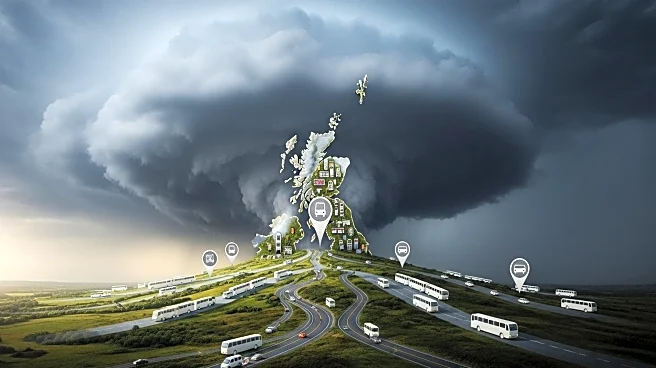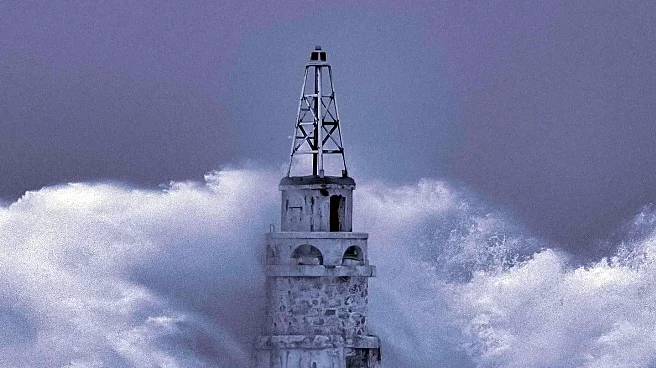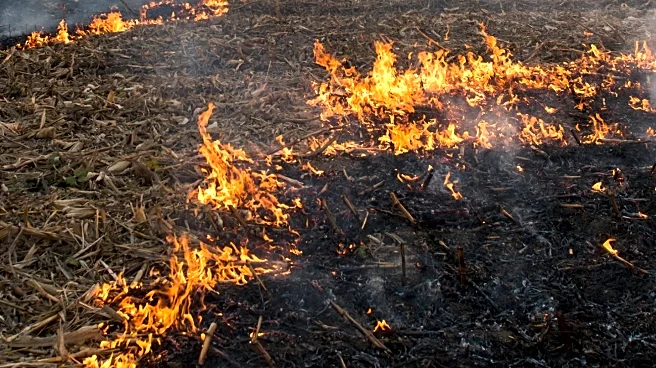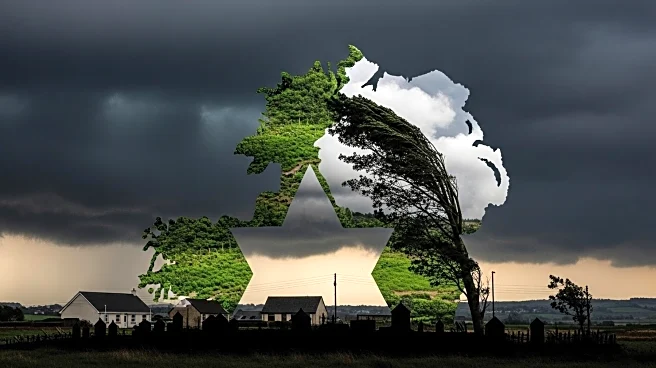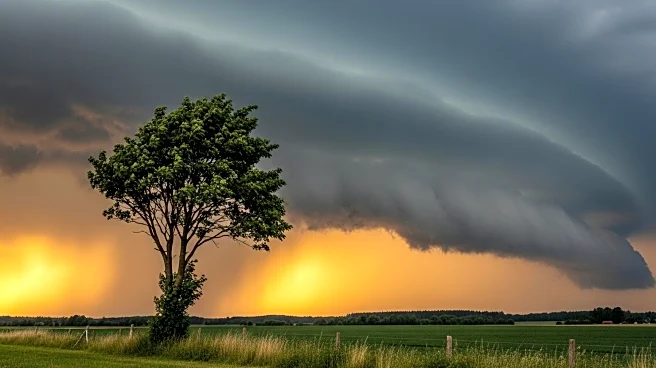What is the story about?
What's Happening?
Storm Amy has caused significant disruptions in the UK, particularly affecting the coastal areas of Norfolk and Suffolk. The Environment Agency (EA) issued flood warnings for several regions, including the River Yare between Norwich and Great Yarmouth, and the River Waveney near Lowestoft. High tides and strong winds, reaching speeds of up to 55 mph, have led to elevated water levels, with the tide at Great Yarmouth reaching 2.59 meters. The storm has also resulted in trees falling on roads, causing further disruptions in Norfolk and Essex. The EA has been actively monitoring flood defenses and advising residents to prepare for potential flooding.
Why It's Important?
The impact of Storm Amy highlights the vulnerability of coastal and low-lying areas to extreme weather events. The disruptions caused by the storm, including road blockages and power outages, underscore the need for robust infrastructure and emergency preparedness in the face of climate-related challenges. The situation also emphasizes the importance of timely warnings and effective communication from agencies like the EA to mitigate risks to life and property. As climate change continues to influence weather patterns, such events may become more frequent, necessitating adaptive measures in urban planning and resource management.
What's Next?
With the immediate flood warnings lifted, the focus will shift to recovery and assessment of the damage caused by Storm Amy. Local authorities and emergency services will likely continue to clear debris and restore services in affected areas. The event may prompt discussions on enhancing flood defenses and infrastructure resilience in the region. Additionally, there may be increased advocacy for climate action to address the root causes of such extreme weather events.
Beyond the Headlines
The occurrence of Storm Amy serves as a reminder of the broader implications of climate change on weather patterns and the environment. It raises questions about the long-term sustainability of current infrastructure and the need for comprehensive climate adaptation strategies. The storm's impact on local communities also highlights the social and economic dimensions of climate resilience, particularly for vulnerable populations who may lack the resources to recover quickly from such events.
AI Generated Content
Do you find this article useful?


